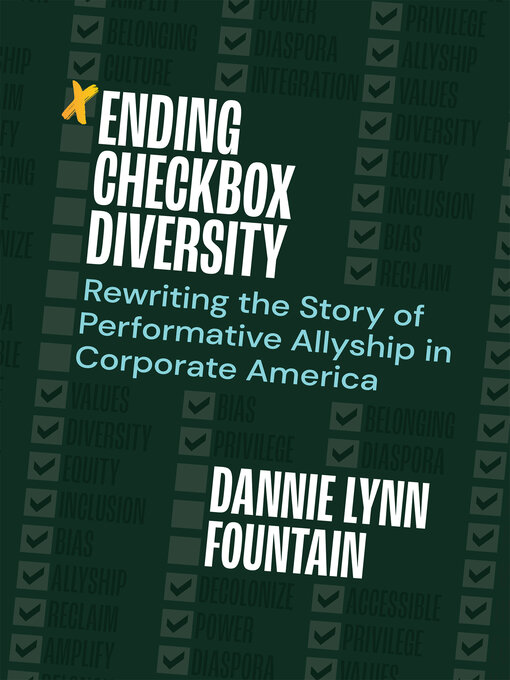- English
- Español
-
Description
-
Details
As a triple minority who passes for a straight white woman in corporate America, Dannie Lynn Fountain has seen too many companies pretend to care about diversity, equity, and inclusion (DEI) only for its public relations outcomes. In Ending Checkbox Diversity, Fountain explores how the current structure of corporate DEI lends itself to the continued oppression of marginalized identities. She examines the narrow objectives and metrics that allow for shallow or no improvement and how shifting diversity responsibility to employee resource groups enables companies to disclaim responsibility for making meaningful progress. She looks at the impact of Zennials and Gen Zers, the most diverse generations ever, and breaks down precisely why some notable examples of poor DEI initiatives failed (and what should have been done differently). And she builds a road map for what real DEI looks like and how to avoid the performative allyship trope.

Kindle Book
- Release date: October 25, 2022
OverDrive Read
- ISBN: 9781523001378
- Release date: October 25, 2022
EPUB ebook
- ISBN: 9781523001378
- File size: 646 KB
- Release date: October 25, 2022
As a triple minority who passes for a straight white woman in corporate America, Dannie Lynn Fountain has seen too many companies pretend to care about diversity, equity, and inclusion (DEI) only for its public relations outcomes. In Ending Checkbox Diversity, Fountain explores how the current structure of corporate DEI lends itself to the continued oppression of marginalized identities. She examines the narrow objectives and metrics that allow for shallow or no improvement and how shifting diversity responsibility to employee resource groups enables companies to disclaim responsibility for making meaningful progress. She looks at the impact of Zennials and Gen Zers, the most diverse generations ever, and breaks down precisely why some notable examples of poor DEI initiatives failed (and what should have been done differently). And she builds a road map for what real DEI looks like and how to avoid the performative allyship trope.

-
Details
Publisher:
Berrett-Koehler Publishers
Kindle Book
Release date: October 25, 2022
OverDrive Read
ISBN: 9781523001378
Release date: October 25, 2022
EPUB ebook
ISBN: 9781523001378
File size: 646 KB
Release date: October 25, 2022
-
Creators
- Dannie Lynn Fountain - Author
-
Formats
Kindle Book
OverDrive Read
EPUB ebook
-
Languages
English
Why is availability limited?
×Availability can change throughout the month based on the library's budget. You can still place a hold on the title, and your hold will be automatically filled as soon as the title is available again.
The Kindle Book format for this title is not supported on:
×Read-along ebook
×The OverDrive Read format of this ebook has professional narration that plays while you read in your browser. Learn more here.
